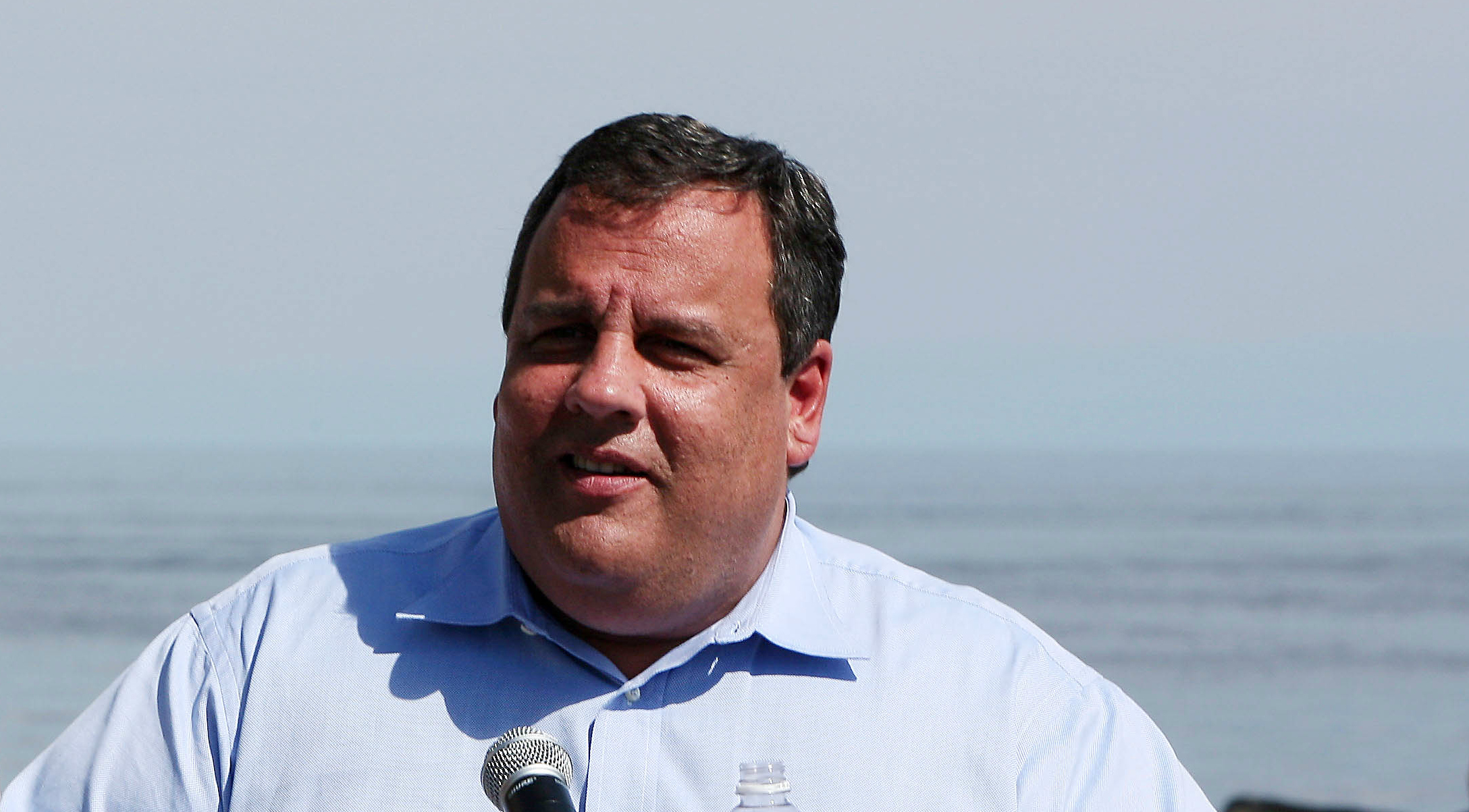Look up anything about recovery from Superstorm Sandy on official New Jersey government websites and you might notice something odd. The word “resiliency” is everywhere, but certain words — climate change, global warming, rising sea levels — are notably absent. Climate and sea level are not mentioned in recovery documents on the websites of the governor’s office, the New Jersey Department of Environmental Protection (DEP), or the Department of Community Affairs, nor do they appear in a recent report by New Jersey Transit on its poor preparation for Sandy.
Consider the New Jersey Governor’s Office of Recovery and Rebuilding “Resiliency” webpage. Here is how often a few choice terms appear there:
- mitigation: 9
- resilience, resilient, resiliency: 23
- flood: 15
- climate: 0
- sea: 0
- ocean: 0
- rise, rising: 0
Press releases from the office of New Jersey Gov. Chris Christie (R) tout his “commitment to a strong and resilient shore,” but never mention why the shore is imperiled in the first place.
The NJ DEP avoids any mention of climate change or sea-level rise in its public communications pertaining to Sandy, such as its “Rebuilding After Sandy” fact sheet. Of course, it can convey the main information without addressing climate change. And Sandy, like any other storm, cannot be blamed specifically on climate change. But placing rebuilding in the context of climate change — and its promise of higher sea levels and stronger, more frequent storms — would be helpful. For example, in answering the question “What’s the benefit of elevating now if I’m not required to?” the agency writes, “In addition to ensuring that your structure and all of its contents are better protected, many property owners will find that they will recoup the cost of elevating through lower insurance premiums over a matter of years.” Another reason to elevate your beachfront home is that in the years ahead, the polar ice caps will melt, the seas will rise, and your house will be underwater.
Similarly, the FAQ for the NJ DEP Superstorm Sandy Blue Acres Acquisition Program advises eligible residents of flood zones to sell their homes to the state of New Jersey, principally for short-term economic reasons. It adds, “An important benefit is that your family will be safe and out of harm’s way.” But the whole document never mentions the increasing risk of harm from higher sea levels.
An action plan for disaster-recovery block grants from the Department of Community Affairs mentions “resiliency” 12 times, and throws in buzzwords such as “sustainability” and “hardening” environmental infrastructure. But no climate change, global warming, or sea-level rise.
On Christmas Eve, presumably hoping to avoid attention, NJ Transit, which oversees New Jersey’s commuter trains and is run by Christie appointees, released a report on its ineffectual preparations for Sandy. The agency was criticized after Sandy for having stored its trains in low-lying rail yards in the Meadowlands and Hoboken. Subsequent flooding damaged one-quarter of the agency’s fleet. Partly this was the result of a sloppy error — NJ Transit used incorrect information in assessing which areas were likely to flood.
But the problem may have been larger. WNYC reported in May that the devastation of the state’s train fleet during Sandy “followed years of missed warnings, failures to plan, and lack of coordination under Governor Chris Christie, who has expressed ambivalence about preparing for climate change while repeatedly warning New Jerseyans not to underestimate the dangers of severe storms.” Critics argue that Christie’s closing of the New Jersey Office of Climate Change and Energy may be partly responsible for NJ Transit’s lack of preparedness for the new level of storm surges.
NJ Transit’s report on its failures describes Sandy as “a raging freak of nature,” as if to underscore its uniqueness. It recommends reviewing operating procedures “in light of the Hurricane Sandy experience,” but it does not discuss the fact that hurricanes like Sandy will become more frequent, or why. Climate change and sea-level rise are nowhere to be found.
Jeff Tittel, director of the New Jersey Sierra Club, alleges that these omissions are deliberate, and politically motivated. Tittel says that multiple current civil servants in the NJ DEP have told him that they were instructed “from the top,” meaning NJ DEP Commissioner Bob Martin or Deputy Commissioner Michele Siekerka, not to discuss climate change or sea-level rise in relation to Sandy. This would be a relatively recent order, of course, since Sandy hit a little more than a year ago. There are plenty of documents on the NJ DEP website from 2011 or earlier discussing climate change.
The NJ DEP strenuously denies Tittel’s charge. Larry Ragonese, a spokesman for the department, calls it “ludicrous.” According to Ragonese, the DEP’s fact sheets about Sandy recovery are intended to help New Jerseyans rebuild, and if climate change hasn’t been mentioned, that is because it isn’t relevant. “Our Sandy fact sheets are a tool to help you get through the bureaucracy and lead you through the next step,” says Ragonese. “What we’ve done here is not to tell the guy on Main Street in Seaside Heights about the future of climate. We’re saying, ‘Here are tools, and numbers you can call to get through the red tape.’ This was not an attempt to get into a dissertation on Arctic ice melt.”
Gov. Christie’s office and NJ Transit did not reply to requests for comment. (Christie canceled his one public event Wednesday—an announcement of progress on Sandy recovery—after it was revealed that his deputy chief of staff had ordered the Port Authority to close lanes on the George Washington Bridge to New York City, as political retribution for the Democratic mayor of neighboring Fort Lee declining to endorse Christie’s reelection.)
Some environmentalists question whether fast rebuilding is even a good idea in light of the heightened risks that climate change will pose to the Jersey Shore. In December InsideClimate News noted, “Following Sandy, the Christie administration adopted new building codes, requiring homeowners and businesses to rebuild one foot above updated FEMA flood zones. … However, FEMA’s latest flood maps — which are being used to guide this reconstruction — don’t include future sea level rise or more frequent Sandy-like storms. This means that structures rebuilt after Sandy will be vulnerable again in just a few years.”
Just this week, a team from Rutgers and Tufts universities released new research suggesting that sea levels along the Jersey Shore will rise faster than the global average — 1.5 feet by 2050, in a mid-range scenario, and 3.5 feet by 2100.
New Jersey environmental advocates think Sandy recovery plans should incorporate the expected higher sea levels, worse storms, and more frequent flooding they will cause. New York Gov. Andrew Cuomo (D), for example, has proposed a climate change–based building code.
Ragonese says the new codes were adopted in haste to facilitate rebuilding, and that complaints about them ignore the economic realities facing New Jerseyans who lost their homes or livelihoods to Sandy. “People say, ‘Why didn’t you hold up some of this for a year? Why didn’t you consider not rebuilding some of the shore?,’” says Ragonese. “People [in New Jersey] don’t have a year, or two or three, to put themselves back together. Our directive by the governor was, ‘We want people to rebuild, add the dunes, put in seawalls where you need to, buy out homes where you can get people to leave.’ If it doesn’t have the label climate change or sea-level rise, it’s not on purpose.”
While the NJ DEP contends there is no political motivation to its silence on the potential connection between global warming and Sandy, it is clear that Christie has made a decision not to link Sandy, the signature moment of his tenure, to climate change. Christie has claimed the mantle of fortitude in the face of disaster, much as New York Mayor Rudy Giuliani (R) did in the wake of the attacks of Sept. 11. And, like Giuliani, Christie may try to parlay his heightened national profile and broadened bipartisan support into a presidential campaign. But whereas Giuliani turned being Mayor of 9/11 into an organizing policy, staying “on offense” against prospective terrorists, Christie has shown no desire to stay on offense against climate change.
Of course, Republicans in Iowa and South Carolina may not like the idea of cap-and-trade as much as the idea of starting wars in the Middle East. New Jersey Shore residents, though, will live with the consequences of inaction on climate change.
See also: Chris Christie is no moderate on the environment




